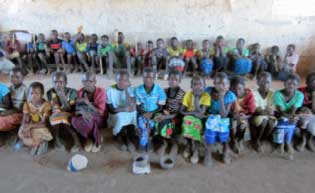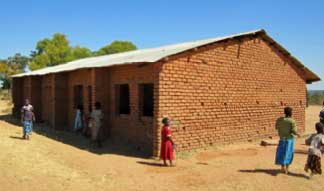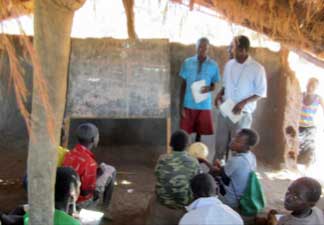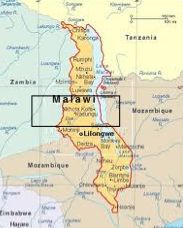Jwanthi Primary School completed on September 24, 2012!

The New School Block
Jwanthi Community Profile
Jwanthi village was founded in 1936 and has a population of approximately 4,500 people. Most of these people belong to the Tumbuka ethnic group and also speak Tumbuka, though there are some Chewa people as well. The majority of Jwanthi’s residents practice Christianity. The leaders of the village are Sub-Traditional Authority Chisinga and Group Village Head Jwanthi. Jwanthi is 71 km from the buildOn office in Kasungu. The closest medical clinic is 9 km away; people travel there on foot or by ox cart. The Kakuku River passes quite close to Jwanthi, and Kasungu National Park is only 8 km away. Small scale farming is the primary economic activity in Jwanthi, and the staple crops are maize, soya beans, groundnuts and tobacco. The climate in Jwanthi is typical of Malawi’s savannah, with a warm dry season from August to November and a cooler rainy season from December to April.
The School situation




Mdekanjiwa Primary School- There are currently 825 students (442 girls and 383 boys) enrolled in Mdekanjiwa Primary School. They study with 7 teachers in grades 1 through 8. This is a full primary school, so students do not have to travel to other villages to complete their primary education. Formal education has been available in Jwanthi since 1986. There were two temporary school blocks in Jwanthi prior to this project. These structures are not large enough to accommodate all 825 enrolled students. Teachers usually deal with this problem by holding classes in shifts and teaching some grades outside under a shade tree- but during the rainy season this is not possible. The teachers at Mdekanjiwa also expect enrollment to increase as the infrastructure improves in Jwanthi since there are still many village children not enrolled in school at all.
The Jwanthi School Project

The School's Teachers
The Jwanthi school project broke ground on August 4th 2012 and was completed on September 13th 2012. This new school block in Jwanthi has 2 classrooms with a corrugated metal roof and a poured concrete floor. It was built with more than 50,000 fired clay bricks molded by members of the community! Students and teachers began using the new school on September 24th 2012. The people of Jwanthi contributed a total of 3,974 volunteer workdays to the project, which was completed 26 days ahead of schedule largely because the community was committed to finishing the school in time for the start of the new school year. Before beginning construction the community members also collected local materials for the project, molded and fired thousands of clay bricks, and met with buildOn staff to sign a covenant outlining the following responsibilities:
Community Contribution
• Unskilled labor: 30 workers (15 women and 15 men) per day, six days per week
• Commitment to educating girls and boys equally
• The land on which the school is built
• High quality local materials: sand, gravel, water & rocks
• Volunteer management committee made up of 12 villagers (six women, six men)
• Lodging for buildOn Field Coordinator and skilled laborers in local houses
• Basic construction tools (picks, buckets, etc.) when available
buildOn Contribution
• Architecture and engineering
• Construction materials (excluding local materials) for school and latrine
• Skilled labor and plans needed to build the school
• Project management (buildOn coordinators)
• Instruction in basic construction techniques
I have learned that women can work as well and as much as the men. Cecilia Kamanga – one of the buildOn apprentices who works on the site as a bricklayer- is an inspiration to the young girls and even older women in the community.
- Grace Kalinga, Deputy Head-Teacher
It is critical not to coerce people to work but rather help them understand the value of the development project and the fact that they are the beneficiaries. This is what allowed us to overcome any challenges we faced in Jwanthi.
– Edna Muluta, buildOn Field Coordinator
This school will change the appearance of this community but also the attitude of the community members towards education. I hope the new block will attract lots more students to enroll in school.
- Raphael Mwandira, School Management Committee member
